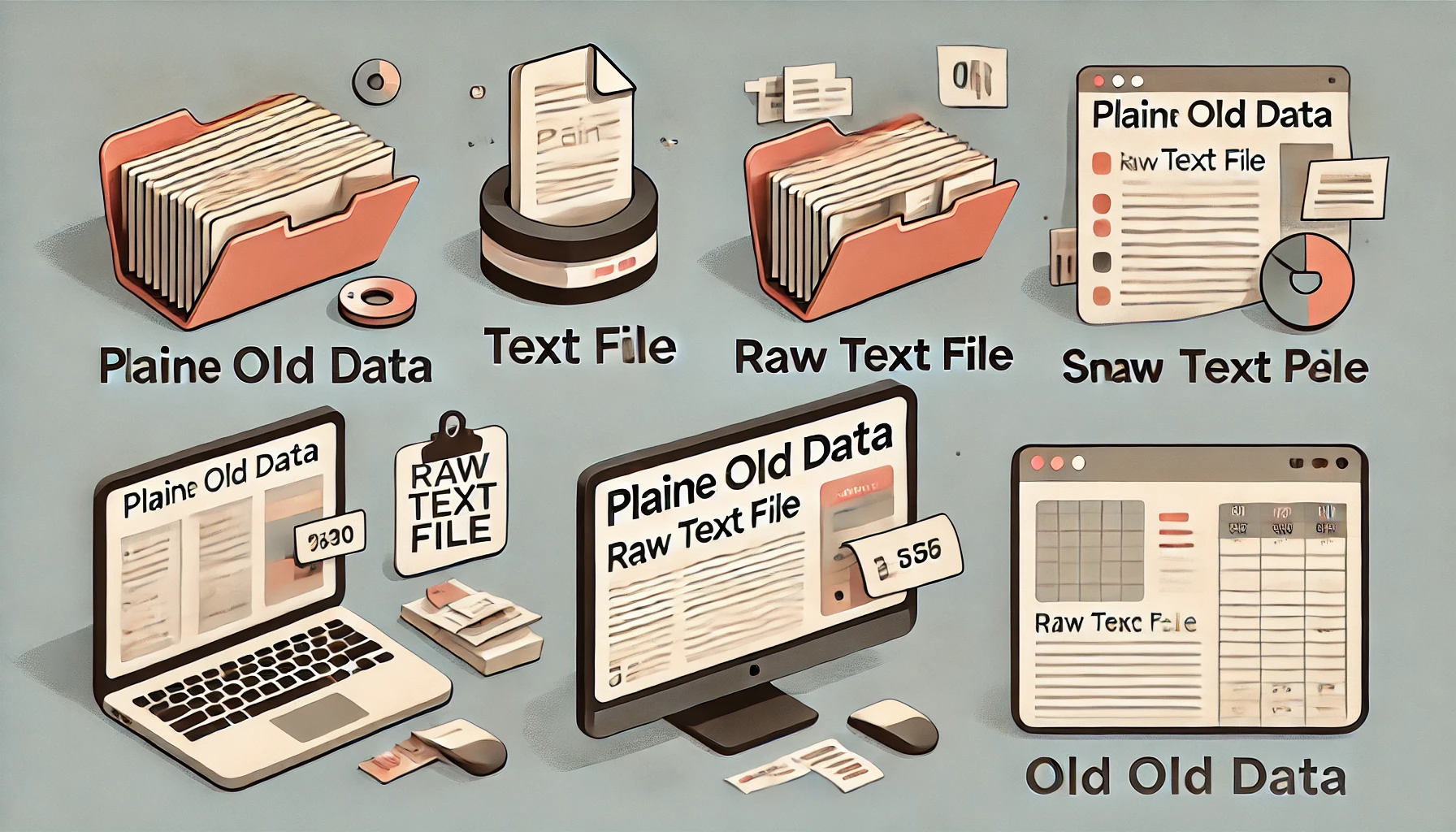Plain Old Data Examples: Real-World Use Cases

When we talk about data, it's easy to picture complex, unwieldy databases and intricate data structures. However, many of the datasets that are used in our everyday lives and in the technology we depend on consist of plain old data (POD). These are simple, easily accessible, and readily usable. This article will explore diverse, practical examples of plain old data, ranging from basic logs and configuration files to more complex user behavior data and transaction records, illustrating how simple formats can power many applications. By examining concrete use cases, this article will shed light on why POD continues to play a vital role in many technology contexts.
Basic Definition of Plain Old Data
Before diving into the examples, it's good to re-establish the definition of plain old data. POD refers to simple, well-structured datasets that can easily be read by both humans and machines. Common formats include CSV, TSV, simple JSON files, text files, and basic database outputs. The underlying principle is simplicity and human readability, and being able to easily process it with simple programs.
Example 1: Simple Data Logs
Data logs are a critical component of nearly all systems. These logs record basic information about events, errors, or system operations. Simple data logs often consist of records with a timestamp, log type (e.g. error or warning), and a textual message, all of which are stored in a text file. Log files are simple to generate and can be read using simple text editors or programming libraries. They are a critical part of monitoring software, debugging, and data analysis.
Example 2: Configuration Files
Configuration files are another great example of POD. These files store settings for applications and systems. Usually, configuration files are in key value pairs. They can use a simple text format, such as a JSON file, to store this information. Configuration files are used to control various aspects of a program and can be quickly modified when needed. They often need only be updated when new features are added or when the system changes, and they do not need to constantly be processed or analyzed, so simplicity is key.
Example 3: Simple Sensor Data
Sensor data, from environmental sensors, medical devices or wearable technology, often appears as plain old data. A typical sensor record might include a timestamp and a value such as temperature, pressure, or heart rate. This data is typically in a tabular format, with rows representing a sensor record and columns representing different sensors. This simple structured data is a basic data format for many applications, including time series analysis, statistical analysis and monitoring.
Example 4: Product Catalog
Many online retailers keep a simple product catalog, which is usually a database of products sold on the site. Each product will have an ID, name, description, price, and various other categories of information. Product catalogs can often be stored in a spreadsheet or basic database. Therefore, they are ideal examples of how tabular data can be used in a simple and straightforward way, with well-defined rows and columns.
Example 5: Surveys and Feedback
Survey and feedback data often take the form of POD. You might collect feedback via online forms, where survey questions are the columns and responses are the row data. Simple textual responses, numerical ratings, or multiple-choice options can all be recorded in a tabular format, such as a CSV or TSV file. This kind of data is used to gauge customer opinion and can be processed by simple programming libraries.
Example 6: Basic User Behaviour Data
When you browse the internet, websites will record simple user behavior data which can also be described as plain old data. Typically, the data includes the time spent on a page, the pages visited, the links clicked, and user actions like adding an item to a shopping cart. This information can be stored in simple data files or basic databases. These records can then be used to understand user patterns, and are often an initial data set used for various analytical and AI tasks.
Example 7: Simple Transaction Records
Retail and sales systems use POD to record basic transaction records. Each row in the dataset typically contains a timestamp, transaction ID, customer ID, and the list of items bought and their quantities. This form of data is used in inventory management, revenue tracking and basic accounting, demonstrating how POD is a basic tool for basic financial record keeping.
How These Examples are Useful
The examples provided illustrate how POD is relevant in all forms of systems. Plain old data, although simple, is easily accessible, and it is a critical starting point in many of these systems. It is also easily transformed into structured databases, and can also be used in machine learning models, where simple data is the starting point for many AI systems.
Conclusion
Plain old data might appear simple, but it is a critical component of many systems and processes. From basic logs and configuration files to product catalogs and user behavior data, POD plays a crucial role in recording and representing information. Recognizing and working with simple forms of data can lay a solid foundation for many data driven tasks. It highlights the value and significance of simple data in all forms of applications.